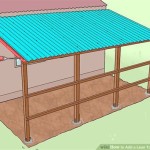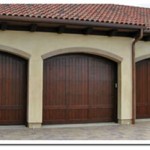Removing A Garage Door Spring: A Comprehensive Guide
Garage door springs are essential components of a garage door system, providing the necessary force to lift and lower the heavy door with relative ease. These springs, either torsion or extension springs, operate under immense tension. Consequently, removing a garage door spring is an inherently dangerous task that should only be undertaken by individuals with the appropriate knowledge, experience, and tools. This article provides a detailed explanation of the process, emphasizing safety precautions and outlining the steps involved. It is strongly advised to consider engaging a qualified garage door technician to perform this task due to the potential for serious injury or even death.
Understanding the different types of garage door springs is paramount before attempting any removal. Torsion springs are typically mounted horizontally above the garage door opening, while extension springs are located along the sides of the door, running parallel to the horizontal tracks. The specific removal procedure differs significantly based on the spring type. This article will primarily focus on the removal of torsion springs due to their higher tension and subsequently greater risk.
Prior to commencing any work, a thorough inspection of the garage door system is crucial. Observe the condition of the springs, cables, rollers, and tracks. Note any signs of wear, damage, or corrosion. This assessment will help in identifying potential problems that may complicate the removal process and inform the necessary replacement parts. Ensure that the garage door opener is disconnected from its power source to prevent accidental operation during the procedure.
Essential Safety Precautions
The safety of the individual performing the removal and any bystanders is the highest priority. Garage door springs store a significant amount of energy, and releasing this energy improperly can result in severe injury or even death. The following safety precautions must be strictly adhered to:
*Disconnect the Power:
Ensure the garage door opener is completely disconnected from its power source by unplugging it from the outlet. This prevents accidental activation of the opener during the spring removal process. *Wear Safety Gear:
Wear appropriate personal protective equipment (PPE), including safety glasses, work gloves, and sturdy shoes. Safety glasses will protect the eyes from flying debris, and gloves will provide a better grip and protect the hands. *Use Appropriate Tools:
Use the correct tools specifically designed for garage door spring removal. These include winding bars, vise grips, and a ladder suitable for the task. Attempting to use makeshift tools is highly discouraged and can lead to accidents. *Work with a Partner:
Ideally, have another person present to assist with the process. A second person can provide support, monitor the situation, and call for help if necessary. *Understand the Mechanism:
Thoroughly understand how the torsion spring system works before attempting any removal. Watch instructional videos and consult with experienced professionals if needed. *Never Stand in the Path of the Spring:
During the winding and unwinding process, never stand directly in the path of the spring or winding bars. If the spring were to break or the winding bars were to slip, it could result in serious injury. *Maintain Control:
At all times, maintain complete control of the winding bars and the spring. Do not allow the spring to unwind rapidly or forcefully. *If Uncertain, Seek Professional Help:
If there is any doubt about the ability to safely remove the garage door spring, it is imperative to contact a qualified garage door technician.Step-by-Step Removal of a Torsion Spring
The following steps outline the general procedure for removing a torsion spring. This is a complex and potentially dangerous process. If the individual is not completely comfortable with any of these steps, it is strongly recommended to seek professional assistance.
1.Secure the Door:
Before beginning, the garage door must be secured in the down position. Use vise grips or C-clamps on the tracks just above the bottom rollers to prevent the door from accidentally rising during the procedure. This prevents the door from flying open and potentially causing injury or damage. 2.Loosen the Set Screws:
Locate the set screws on the winding cone and the stationary cone of the torsion spring. Use a socket wrench to loosen these screws. Do not remove them completely at this stage. Loosening the set screws prepares the spring for unwinding. 3.Insert Winding Bars:
Insert one winding bar into one of the holes in the winding cone. Hold the winding bar firmly and loosen the set screws further. Insert the second winding bar into the adjacent hole. The winding bars will be used to control the unwinding of the spring. 4.Unwind the Spring:
Carefully unwind the spring by moving the winding bar downward. As the first winding bar moves downward, the second winding bar will rotate upward. Maintain a firm grip on both winding bars to control the speed of unwinding. The amount of unwinding required will depend on the initial tension of the spring, usually around a quarter turn at a time. 5.Repeat Unwinding:
Continue this process of alternating between the two winding bars until the spring is completely unwound. The spring should be completely relaxed and no longer under tension. 6.Tighten Set Screws (Temporary):
Once the spring is fully unwound, temporarily tighten the set screws on the winding cone to hold the spring in place. This will prevent the spring from unexpectedly recoiling. 7.Disconnect Cables:
Disconnect the lift cables from the bottom brackets of the door. These cables are connected to the drums on either side of the torsion spring. Carefully remove the cables from the grooves in the drums. 8.Loosen Center Bracket Bolts:
Loosen the bolts securing the center bracket that supports the torsion spring shaft. This bracket is typically located in the center of the garage door opening, above the door. 9.Remove Spring from Shaft:
Slide the spring off the torsion spring shaft. Be careful to handle the spring with caution, as it may still contain residual tension. 10.Repeat for Other Spring (If Applicable):
If there is a second torsion spring, repeat the removal process for that spring as well. 11.Remove the Torsion Tube:
Remove the torsion tube. Depending on the system, this may require loosening additional brackets.Considerations for Replacing the Spring
Once the old spring has been safely removed, careful consideration must be given to selecting the correct replacement spring. The replacement spring must match the specifications of the original spring in terms of wire diameter, inside diameter, length, and wind direction (left or right). Using an incorrect spring can lead to improper door operation, premature wear, and potential safety hazards.
The correct spring size is determined by measuring the existing spring. The wire size can be measured using a specialized wire gauge, and the inside diameter and length can be measured with a tape measure. The wind direction can be determined by observing the direction in which the coils are wound. It is often beneficial to purchase a matched pair of springs, even if only one spring is broken. Replacing both springs simultaneously ensures balanced operation and extends the lifespan of the system.
The installation process is essentially the reverse of the removal process, requiring careful attention to detail and adherence to all safety precautions. The new spring is slid onto the torsion spring shaft, the center bracket is secured, the lift cables are reattached, and the spring is wound to the appropriate tension using the winding bars. The set screws are then tightened to secure the spring in place. The garage door should be tested thoroughly to ensure smooth and balanced operation.
After replacing a garage door spring, it is important to perform regular maintenance on the entire garage door system. Lubricate the moving parts, including the rollers, hinges, and tracks. Inspect the cables for wear and tear and replace them if necessary. Check the balance of the door and adjust the spring tension as needed to ensure smooth and safe operation.
Regular professional maintenance is recommended to ensure the longevity and safety of the garage door system. A qualified technician can identify potential problems before they become major issues and perform necessary repairs or adjustments.

How To Replace Garage Door Spring

Release Garage Door Spring Tension Without Uning Anything

Garage Door Torsion Spring Replacement How To

How To Install A Single Torsion Spring Assembly

How To Replace Garage Door Spring

Simple Tutorial On Garage Door Spring Replacement

How To Replace A Garage Door Spring Essential Steps Tips

How Much Do Garage Door Springs Cost

Garage Door Spring Replacement A 2024 Guide

Replacing Garage Door Springs
Related Posts








